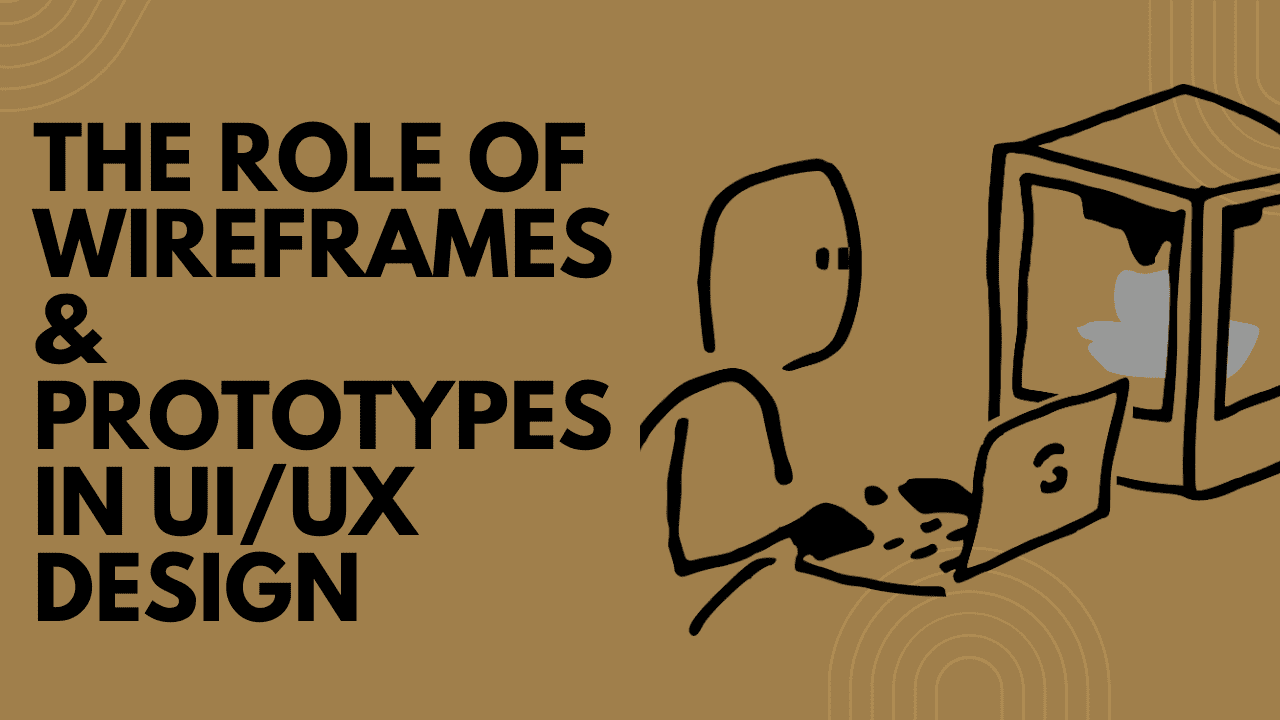In the ever-changing realm of digital product creation, it is imperative to create user experiences that are easy to use, effective, and aesthetically beautiful. Designers use crucial tools like wireframes and prototypes to provide clarity, direction, and functionality to the design process in order to achieve these objectives. Despite having distinct functions, both are essential in determining the user interface (UI) and user experience (UX).
We’ll explore the differences between wireframes and prototypes, their respective functions in the design process, and how combining the two may significantly raise the caliber of digital goods in this blog.
Wireframes: What Are They?
A low-fidelity visual guide that depicts the basic structure of a digital product is called a wireframe. Compare it to a house’s blueprint, which describes the general layout without delving into the finer points of color, texture, or design. The main goals of wireframes are content hierarchy, layout, and functionality.
The positioning of elements (headers, buttons, images, and forms) is one of a wireframe’s essential components.
- Structure of navigation
- Layout of the content
- Paths of user flow
Types of Wireframes:
- Low-fidelity wireframes: Low-fidelity wireframes are simple sketches or digital layouts in black & white.
- Mid-fidelity wireframes: More detail and possibly grayscale shading are features of mid-fidelity wireframes.
- High-fidelity wireframes: These are more like prototypes, but they aren’t completely interactive.
Prototypes: What Are They?
An enhanced, interactive version of the concept is called a prototype. It enables user testing prior to development and replicates how the finished product will work. There are two types of prototypes: low-fidelity (click-through wireframes) and high-fidelity (visually polished, fully interactive mock-ups).
Important characteristics of a prototype include interactive and clickable components.
- Animations and transitions
- Simulations of user tasks that are realistic
- Validation of user flow
Before writing a single line of code, prototypes let users, developers, and stakeholders test the product and offer input.
Understanding the Difference Between Prototypes and Wireframes
| Feature | Wireframes | Prototypes |
| Trustworthiness | Low to moderate | In the middle to high |
| Goal | Organization and design | High (flows, clickable components) |
| Utilized For | Organizing, generating ideas, Feedback | Organizing, generating ideas, and Feedback |
| Details of the Design | Simple, lacking in visual design | comprises typography, color, and branding |
Prototypes and wireframes have different functions and work well together during the design process
Wireframes’ Function in UI/UX Design
- 1. Idea Clarification With early wireframes, stakeholders and designers may discuss features and layout concepts without getting sidetracked by aesthetics. This keeps the emphasis on structure and functionality.
- 2. Accelerating Iterations
Wireframes facilitate rapid idea iteration, particularly in the early stages of design, because they are easy and quick to develop. - 3. Enhancing Interaction
For designers, developers, and other stakeholders, wireframes serve as a shared language. Everyone is given a visual representation of the contents of the product. - 4. Steer clear of scope creep
Wireframes aid in defining the project scope by allowing for the early visualization of screens, which helps to avoid unforeseen complexity or last-minute feature additions.
Prototypes’ Function in UI/UX Design
- 1. Verifying User Flows
Teams may test user journeys and navigation with prototypes to make sure everything works properly and offer users a realistic impression of the product. - 2. Recognizing Usability Problems
Prototypes can be used for early usability testing to identify UX issues before development begins, which can save time and money. - 3. Getting Input from Stakeholders
Clicking through the product allows stakeholders to see the end-user experience more clearly, which promotes more fruitful conversations and buy-in. - 4. Directing Progress
For developers, prototypes provide a clear reference. They eliminate uncertainty during development by showing how buttons should perform, how transitions operate, and what happens when a user takes an action.
Why Both Are Important?
Prototypes take a product’s basic framework and make it a living, breathing creature, while wireframes aid in drawing it out. Employing both guarantees that:
- Functionality and layout are checked early.
- Feedback from users is collected all along the way.
- Design defects are found before development.
- The cycle of product development is more predictable and runs more smoothly.
Consider it similar to creating an automobile. Prototypes are the test models, and wireframes are the blueprints. To produce a car that performs well in addition to looking beautiful, you need both.
The Best Ways to Use Prototypes and Wireframes:
- Use Wireframes First, Not Visuals:
Time can be lost if high-fidelity design is started too soon. To develop the fundamental framework, start with low-fidelity wireframes. - Conduct User Testing with Prototypes:
When evaluated with actual users, even crude interactive prototypes can provide insightful information. - Continue to Iterate:
Prototypes and wireframes ought to be dynamic documents. As comments are received, update and improve them. - Select the Appropriate Equipment:
Designers may produce interactive prototypes and wireframes in the same environment with well-known programs like Figma, Adobe XD, Sketch, and Axure. - Engage the Parties Early:
Obtain early and frequent feedback from users, clients, and developers. This guarantees that the finished product fulfills expectations and reduces rework.
Conclusion:
- Prototypes and wireframes are essential components of successful UI/UX design. Prototypes give your ideas life, while wireframes offer them structure. When combined, they assist designers in confirming hypotheses, involving stakeholders, and producing user-friendly, intuitive digital products.
- It’s dangerous and ineffective to skip either stage, much like when you build a house without a blueprint or test drive a car you’ve never seen. Through careful wireframing and prototyping, teams can design with confidence, cut down on expensive modifications, and eventually produce products that people adore.



